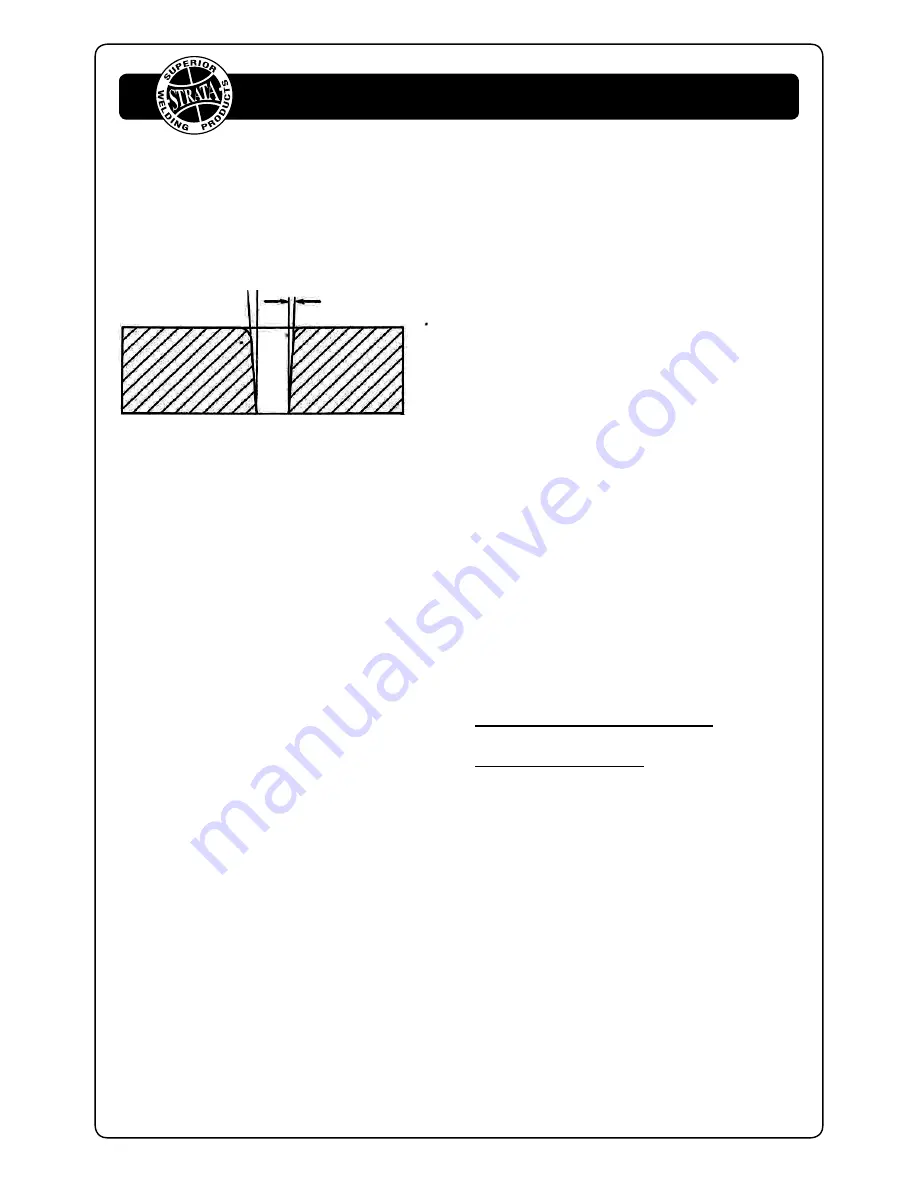
14
www.strata.co.nz
ADVANCECUT 65
5.
Direction of Cut
- The plasma gas stream swirls
as it leaves the torch to maintain a smooth
column of gas. This swirl effect results in one
side of a cut being more square than the other.
Viewed along the direction of travel, the right
side of the cut is more square than the left.
Left Side Cut Angle
Right Side Cut Angle
To make a square-edged cut along an inside diameter
of a circle, the torch should move counter clockwise
around the circle. To keep the square edge along an
outside diameter cut, the torch should travel in a
clockwise direction.
6. Quality Cuts
– Dross (slag) is the excess material
that spatters and builds up on the underside of the
work-piece as you cut. Dross occurs when the oper-
ating procedure and technique is less than optimal.
It will require practice and experience to obtain cuts
without dross. Although less than optimal cuts will
contain dross, it is relatively easy to remove by break-
ing it off using pliers or chipping off with a chisel or
scraping or grinding the finished cut as needed and is
generally only a minor inconvenience.
A combination of factors contributes to the build-up
of dross. They include; material type, material thick-
ness , amperage used for the cut, speed of the torch
across the work-piece, condition of the torch tip, in-
put line voltage, air pressure, etc. Generally there is
an inversely proportional relationship between output
current and speed of cut. Do not use more output cur-
rent than is necessary and adjust speed of cut toward
minimizing dross build-up on underside of cut. Ex-
periment with adjusting current and speed to mini-
mize dross.
When dross is present on carbon steel, it is common-
ly referred to as either ‘high speed, slow speed, or top
dross’. Dross present on top of the plate is normally
caused by too great a torch to plate distance.
‘Top dross’ is normally very easy to remove and can
often be wiped off with a welding glove. ‘Slow speed
dross’ is normally present on the bottom edge of the
plate. It can vary from a light to heavy bead, but does
not adhere tightly to the cut edge, and can be easily
scraped off. ‘High speed dross’ usually forms a nar-
row bead along the bottom of the cut edge and is very
difficult to remove. When cutting troublesome steel,
it is sometimes useful to reduce the cutting speed to
produce ‘slow speed dross’. Any resultant clean up
can be accomplished by scraping, not grinding.
Other Knowledge
& Resources
Please refer to Euroquip website
www.euroquip.co.nz/ Downloads.html
for knowledgebase articles & operation videos.










































